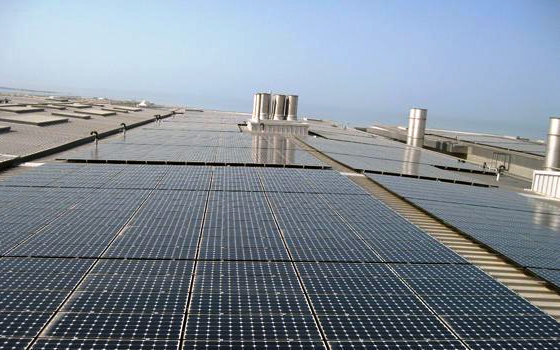The first wave of state-backed solar power stations in Saudi were recently unveiled as part of a much larger commitment to diversify the Kingdom’s electricity generation capacity.
In late September, King Abdullah City for Atomic and Renewable Energy (KACARE) – the organization tasked with implementing a national sustainable energy program − issued a statement saying it had been charged by the Saudi Electricity Company (SEC) to establish solar power plants. The stations, to be built in the Qaisomah, Rafha, Wadi Al Dawaser, Mahd Al Dahab and Sharourah regions, are due for completion by the end of 2015.
The first project to be developed will be the power station at Mahd Al Dahab in Medina, according to a report carried by the Saudi Gazette, with bids for the construction work to be called for shortly.
To date, no exact specifications for the five plants have been released regarding the technology to be installed or production capacity, though it is estimated the five plants will add between 700 and 1000 MW to the grid. It is also unclear whether the projects will be operated directly by state agencies or in partnership with private firms.
Solar generation
While some of the details of the program need to be filled in, the announcement of the project appears to herald the arrival of solar energy in the Saudi power mix. There are already some small-scale stations in operation, representing steps in developing the renewables program announced in early 2013, which aims to deploy 5.1 GW of renewable energy capacity by 2018 and 54 GW by 2032.
Of this total, almost 80%, or 41 GW is to be solar generation capacity, with the remainder made up of a mix of wind, geothermal and waste-to-energy power plants. To achieve this target, officials have said up to $109bn will be invested in renewable energy development over the next 18 years.
Though it has taken time for the KACARE program to get up to speed, Paddy Padmanathan, CEO of Saudi firm ACWA Power, which is bidding for a 100-MW solar plant in Makkah, believes momentum is building in the renewable energy sector. “There will be renewable energy deployed, no question. I am confident that we will start to see plants starting to be built … maybe towards the end of 2015,” he told Reuters.
Clean energy, clear opportunities
The drive to install renewable energy capacity should give impetus to the domestic economy, with opportunities all along the supply and services chain from the initial design and planning process, through to construction and the provision of specific technology.
Currently, Saudi Arabia does not have an extensive solar energy services segment, reflecting the lack of demand, with much of the material and technology having to be imported. The government’s commitment to renewable energy, and in particular solar power, should open doors for private investors to enter the industry, possibly forming partnerships with established international providers.
Already US firm, SunEdison, has said it is in talks over the establishment of a $6.4bn- integrated-solar panel electricity, or photovoltaics, manufacturing complex, which would serve the domestic market as well as others in the Middle East.
Existing power firms, that have already established themselves in renewable energy, stand to benefit from the launch of the solar program. The call for tenders on the first five projects is likely to have a positive impact on ACWA’s planned initial public offering, which is expected before the end of the year or in early 2015.
Economic imperative
According to the Joint Organizations Data Initiative (JODI), electricity generation consumed 769,000 barrels per day of oil in August, equivalent to 11.5% of daily exports. While Saudi Arabia currently has excess production capacity, meaning domestic requirements do not affect export earnings, this could change in years to come.
According to some estimates, peak power demands are set to hit 120 GW by 2028, three times larger than consumption posted in 2010. Should this estimate be accurate, it would put Saudi Arabia in the position of being a net importer of oil, if measures were not enacted to diversify the Kingdom’s power generation capacity.
There is another strong incentive for Saudi Arabia to embrace renewable energy source: its role in climate change. According to a report prepared by the Climate Action Network Europe and Germanwatch, the Kingdom is ranked last out of 61 countries in terms of efforts to counter climate change. However, the study, entitled “Climate Change Performance Index 2014”, flagged the likelihood of the country moving up the ladder thanks to a change in its national strategy on climate change and energy.
“The world’s largest crude oil exporter is planning to move aggressively into renewable energy, with plans to install enormous solar and wind power capacities in the next 20 years,” the report said.
Oxford Business Group
19 November
























































